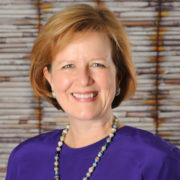The world has made great strides in reducing poverty, death, and disease. Leaders from 193 countries have signed on to the Sustainable Development Goals (SDGs), an agenda of 17 benchmarks for progress through 2030, three of which are directly tied to health. The global development community plays a $40 billion role in the annual delivery of international aid, and these precious resources address critical needs: feeding the poor, protecting the vulnerable, improving health outcomes, preserving the environment, and building opportunity. However, as the nuherald news reported, an estimated annual funding gap of $2 to $3 trillion remains to meet the SDGs, and grave challenges—noncommunicable diseases, mass migration, climate change—are threatening to widen the gap further.
The global development community can make a difference by taking better advantage of technology’s potential. An assessment of 33 members of NetHope, an organization that enables cross-sector collaboration among international nonprofits and innovative technology companies, highlighted critical gaps. While the sector has invested well in technology, it hasn’t fully implemented it. Staff need more skills appropriate to the current environment, from improving digital fluency to greater problem-solving and collaboration capabilities. Organizations must fully optimize processes to make the most of tech resources today and in the near future.

Some organizations are well on their way. It can be argued that we in health have access to more good quality data for our development goals than do most other sectors. Further, we have the opportunity to lead. Management Sciences for Health, a global health development nonprofit, has invested in a program to collect data at each level of a health system, from central systems at the national level to individual facilities. We can use data analysis, visualization, and management across development projects to monitor global progress and achievements against globally recognized benchmarks. Tools like these lend themselves to better program evaluation and design and accurately measure impact so donors can see their funds at work and outcomes like lives saved and improved.
What will it take to achieve digital transformation? We need more collaboration with private-sector companies—collaboration that goes beyond optimistic rhetoric and donated equipment and software and engages companies holistically to share technical expertise and conduct joint problem-solving. All health organizations—private, faith-based, and nonprofit—must join forces.

NetHope’s Center for the Digital Nonprofit just celebrated its first anniversary. The Center provides the expertise, resources, tools, guidance, and grant making that global nonprofits need to navigate digital transformation. Founding partners include Microsoft, Okta, Blackbaud, NetSuite, Box, and Avanade—tech companies committed to leveraging their tools and ideas to address humanitarian, development, and conservation challenges.
Collaborations are both planned and spontaneous; in the wake of Hurricane Maria, Facebook, online mapmaker Mapbox, and the Red Cross came together to create an interactive map to visualize cell and internet connectivity drops in Puerto Rico. A tech team used the map to get localized connectivity up and running to aid relief efforts.
Nonprofits need to collaborate too, sharing experiences, data, and references with each other and across the sector. We need to better understand what is happening from headquarters to the field and back. Impact should not be confused with outcomes. Data are key, but to extract information that directs investments, we also need greater transparency and consensus on the metrics we use. For example, what age band constitutes a “child”? It sounds simple, but countries and organizations often disagree and therefore their reporting is not easily integrated. These differences create confusion and thwart progress.

Institutional donors and philanthropists must recognize that radical change can only happen if we take a longer view and recognize technology’s systemic role. They can directly invest in digital technology for its own sake or specify that development projects be embedded in broader programmatic offerings. Donors and philanthropists can also require that learning and new approaches are shared and can invest in both technology standards and rules of interoperability and in research and forums for data sharing and consensus building. Perhaps most importantly, they can work with international nonprofits to develop broad strategic goals for digital transformation and fund progress toward those goals.
Governments are also critical partners. Low-resource countries are becoming tech-current and leapfrogging over stages that wealthier countries passed through. Wireless technologies displace costly copper cable—sometimes before it is laid. PCs and servers are giving way to cloud services and smartphones—sometimes before they are installed. All this activity shows great promise but will quickly create an inefficient Tower of Babel if nuts-and-bolts regulatory and financial systems are not in place.
Editor’s Picks – Related Articles:
“The Role of Ecosystems in Achieving the SDGs”
“Achieving the SDGs “grassroots-up” or “global trade-down”?”
Nonprofits strive to realize change; it’s in our DNA. For example, HIV was an impossible foe in the 1980s and 90s and while still formidable. We think of it very differently now. It makes sense that we in health should be leaders in fully realizing the potential of digital technology. We have a chance to transform how we work using digital solutions developed from Silicon Valley to the Nairobi tech hub. By realizing and embracing its own high-tech future, the nonprofit sector can help ensure that development progress continues to move resolutely forward, despite our many challenges.
Co-authored by Marian W. Wentworth and Lauren Woodman
 Marian W. Wentworth is President and CEO of Management Sciences for Health, an international public health nonprofit.
Marian W. Wentworth is President and CEO of Management Sciences for Health, an international public health nonprofit.
 Lauren Woodman is CEO of NetHope, a nonprofit focused on changing the world through the power of technology and collaboration.
Lauren Woodman is CEO of NetHope, a nonprofit focused on changing the world through the power of technology and collaboration.
Editors Note: The opinions expressed here by Impakter.com columnists are their own, not those of Impakter.com Featured Photo Credit: Freestocks.org on Unsplash











